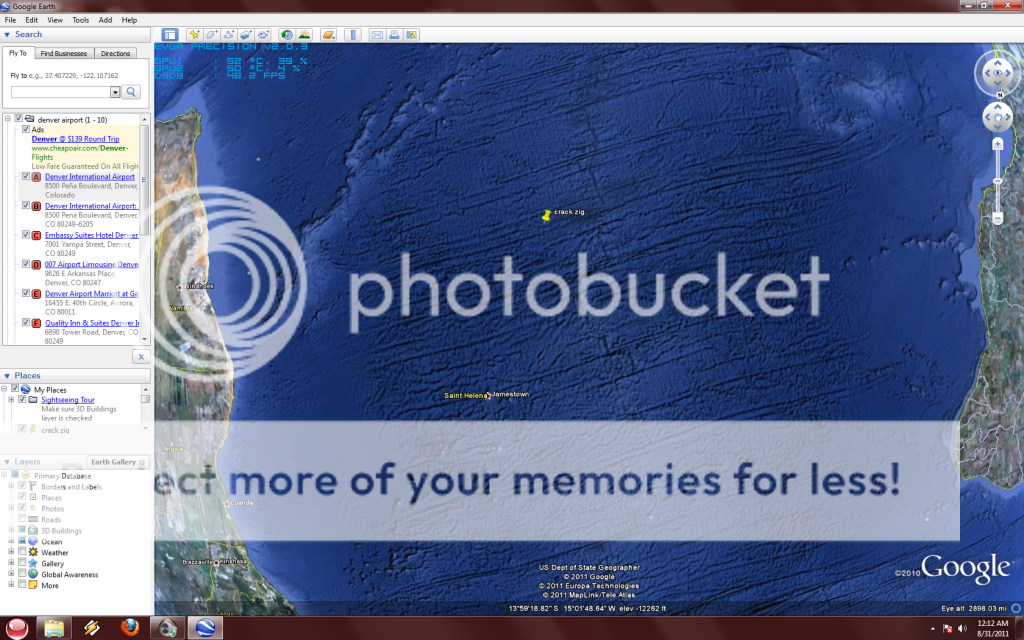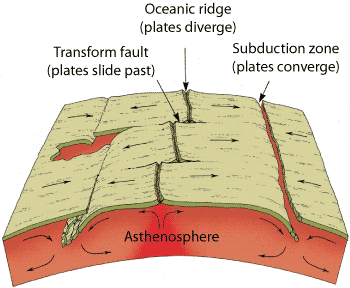It looks like you're using an Ad Blocker.
Please white-list or disable AboveTopSecret.com in your ad-blocking tool.
Thank you.
Some features of ATS will be disabled while you continue to use an ad-blocker.
0
share:
This does not look natural to me, does any one know what causes it?






edit on 31-8-2011 by sabbathcrazy because: (no reason given)
I believe it be a form of ocean floor rifting. Although I can't name the exact kind off the top of my head, I do know that I've seen it before as an
example in a geology class.
It always reminds me of stretch marks when i look at the ocean floor topography.
Sea-floor spreading from Mid-Ocean Ridges causing the rifts. Plate techtonics basically for a short answer.
Kinda cool to look at though.
Kinda cool to look at though.
I am not saying this is what it is. But when i first saw it, it looked like huge industrial doors. Look that the rectangles, they match the opposite
rectangle. It caught my eyes.
reply to post by sabbathcrazy
Yeah.
And why is there solid land under the water like that ? The aliens did it.
Yes, they put land under the water to trick us.
Yeah.
And why is there solid land under the water like that ? The aliens did it.
Yes, they put land under the water to trick us.
reply to post by Burnerz
Forgot the CIA, FEMA, Bush, and Obama.
Anyways, its the area where the crust is steadily ripping apart and being replaced by new crust (cooled lava)
Forgot the CIA, FEMA, Bush, and Obama.
Anyways, its the area where the crust is steadily ripping apart and being replaced by new crust (cooled lava)
The ocean floor is always moving, and there are many underwater submarine volcanoes and earthquakes. It is similar to faults on land, just
underwater.
Submarine Volcano
Link
Submarine Volcano
Link
It's a tectonic plate boundary. The ones you are referring to are referred to as divergent with sea-floor spreading. They do create rifts as
mentioned previously, but, more importantly, the "zig" and "zag" features you see are areas along the boundary zone where transform (or
strike-slip) movement pulls the edge of the plate in opposite directions.
The entire earth's crust is covered with these boundary zones, much like the cracked shell of a hard-boiled egg. The cracked crustal plates move about because the molten magma beneath is constantly rising toward the surface as it moves up away from the central heat source, cools, and then heads back down again to be reheated. This creates a convection current of material upon which the crustal plates are sliding around. Inevitably the edges of the these plates bump up against each other, slide along each other, or pull away from one another. This is why we have most of the volcanoes and earthquakes on the planet at the boundary zones of these plates and their consequent interaction.
One of the largest of these plate boundary cracks is at the mid-atlantic ridge, where new ocean-sea floor is created and material moves up to the surface and away from each other. The activity causes the continents to separate, increasing the size of the Atlantic while also forcing Africa and South America to bump-and-grind against adjacent plates.
The entire earth's crust is covered with these boundary zones, much like the cracked shell of a hard-boiled egg. The cracked crustal plates move about because the molten magma beneath is constantly rising toward the surface as it moves up away from the central heat source, cools, and then heads back down again to be reheated. This creates a convection current of material upon which the crustal plates are sliding around. Inevitably the edges of the these plates bump up against each other, slide along each other, or pull away from one another. This is why we have most of the volcanoes and earthquakes on the planet at the boundary zones of these plates and their consequent interaction.
One of the largest of these plate boundary cracks is at the mid-atlantic ridge, where new ocean-sea floor is created and material moves up to the surface and away from each other. The activity causes the continents to separate, increasing the size of the Atlantic while also forcing Africa and South America to bump-and-grind against adjacent plates.
new topics
-
Rep. Alexandria O. Cortez Says Forcing People to Use The Correct Bathroom is Dangerous.
US Political Madness: 5 hours ago -
Cooperation zones
World War Three: 6 hours ago -
Ok this is some BS now WTH
Rant: 7 hours ago -
France gives Ukraine license to fire long-range missiles at Russia
World War Three: 10 hours ago
top topics
-
France gives Ukraine license to fire long-range missiles at Russia
World War Three: 10 hours ago, 9 flags -
Most INSANE internet rabbit hole
Secret Societies: 14 hours ago, 8 flags -
Rep. Alexandria O. Cortez Says Forcing People to Use The Correct Bathroom is Dangerous.
US Political Madness: 5 hours ago, 4 flags -
Ok this is some BS now WTH
Rant: 7 hours ago, 3 flags -
Cooperation zones
World War Three: 6 hours ago, 3 flags -
Stalker 2 - Review from a Veteran
Video Games: 13 hours ago, 2 flags -
Does anyone have a link to download apple pay for androids
General Chit Chat: 13 hours ago, 1 flags
active topics
-
-@TH3WH17ERABB17- -Q- ---TIME TO SHOW THE WORLD--- -Part- --44--
Dissecting Disinformation • 3365 • : RelSciHistItSufi -
Ok this is some BS now WTH
Rant • 7 • : billxam1 -
Rep. Alexandria O. Cortez Says Forcing People to Use The Correct Bathroom is Dangerous.
US Political Madness • 16 • : Astrocometus -
France gives Ukraine license to fire long-range missiles at Russia
World War Three • 14 • : Astrocometus -
Cooperation zones
World War Three • 13 • : VariedcodeSole -
Mood Music Part VI
Music • 3714 • : Hellmutt -
Inca stone masonry at Sacsayhuaman, Ollantaytambo and the Sun Temple
Ancient & Lost Civilizations • 15 • : randomtangentsrme -
Dr Cambell talking about using worm meds for cancer
Medical Issues & Conspiracies • 24 • : ADVISOR -
President-Elect TRUMP Picks Former Florida A.G. PAM BONDI to be U.S. Attorney General.
2024 Elections • 65 • : VariedcodeSole -
Well, here we go red lines crossed Biden gives the go ahead to use long range missiles
World War Three • 332 • : Tolkien
0


